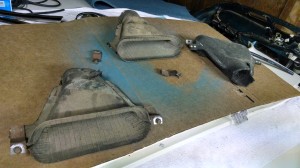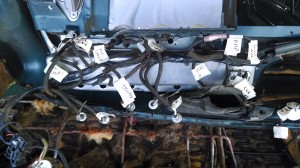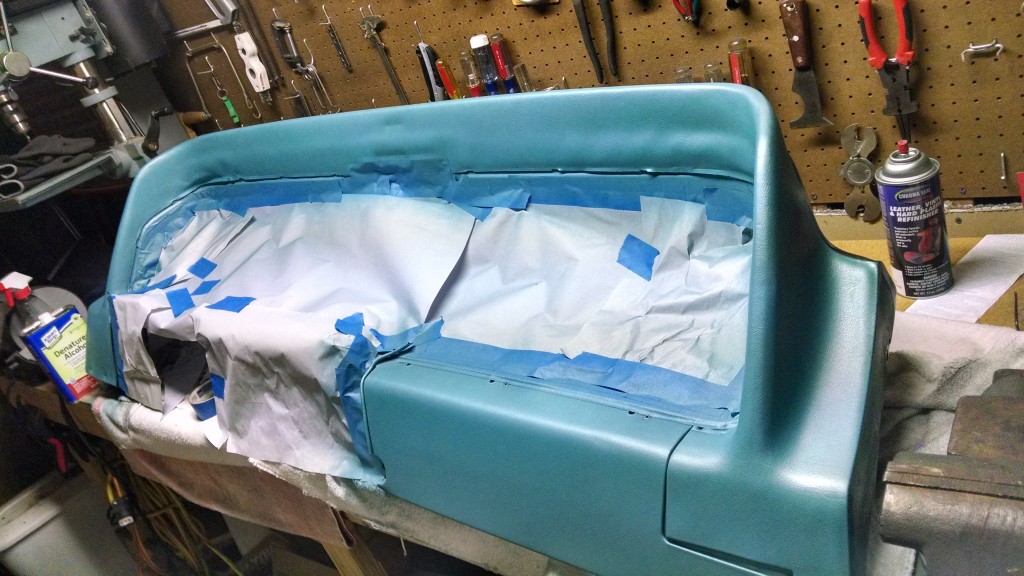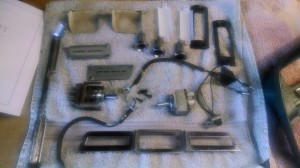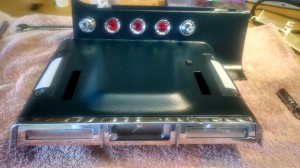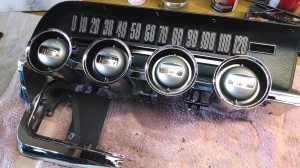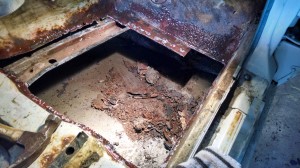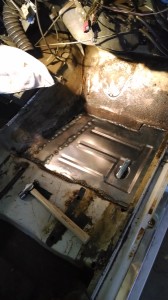While getting the last elements of the dash together–and with thoughts of installing it last week–the insulator behind the old ammeter broke while removing it. A quick search online, followed by a phone call got one moving in our direction, but it didn’t arrive before the weekend.
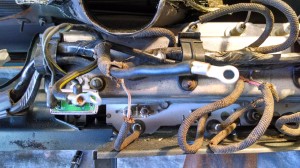
So, I spent this time doing some of the smaller jobs preliminary to installation.
I pulled up the sound insulation on the rear footwells only to find some rust (but no rot) on the driver’s side. More cleaning and rust-killing sprays, but thankfully no metal work involved. The rust inhibitors require a 24 hour cure time, so I was unable to put a coat of primer down, let alone the new Dynamat sound insulation.
Instead, I located some lugs for the wires leading into the ammeter and soldered them in place. (The meter had been bypassed on the old dash.) Since I had the tools out already, I also soldered terminals on the heater blower motor and finished the connections there as well. (Spent about five minutes head scratching and consulting Osborne manuals to figure out how it all went together first.)
I lubed up the long Bowden cable that operates the driver’s side fresh air duct and reinstalled it. This cable is in terrible shape and I had to jury-rig the connection on one end, but I have not been able to find even a good used replacement, so I made due with the fading original.
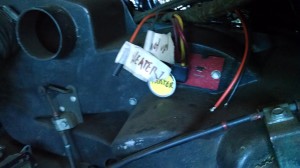
I also lubed up the speedo cable and changed out the few vacuum lines I didn’t get around to when the dash came out some months ago. One of these is the small line that runs to the back of the car to operate the fresh air vent. Over lunch, I seriously contemplated pulling that mechanism out for refurbishing. In the end, though, I decided it was a project for another day and left the new hose plugged and coiled under the rear seat for later this year.
With luck, the insulator will be here early this week and I’ll see the dash back in place shortly afterwards.

